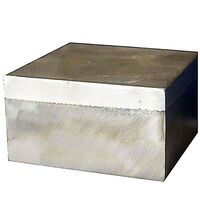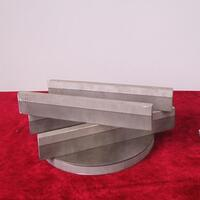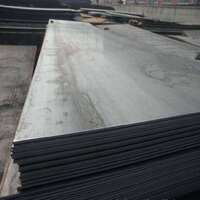1. Introduction
Thinking about giving your home a modern, durable makeover? Metal clad siding is a top choice for homeowners who want low maintenance, weather resistance, and sleek aesthetics. Whether you’re drawn to the rustic charm of corten steel siding or the clean lines of a vertical standing seam metal siding system, this guide will show you exactly how to install and care for your metal clad wall.

Metal clad doesn’t just look great—it lasts decades with minimal upkeep. From corrugated steel facade panels to zinc clad dormers, the options are nearly endless. Let’s break it down step by step.
2. Choosing the Right Type of Metal Clad Siding
Not all metal clad is created equal. Your climate, budget, and design goals will determine the best option.
- Corten steel siding offers a weathered, rust-like finish that stabilizes over time—ideal for modern or industrial homes. Keep in mind that corten siding cost can be higher than standard options.
- Zinc metal siding and zinc clad roof systems provide a soft gray patina and excellent corrosion resistance.
- Aluminum clad steel or stainless clad aluminum blends strength with light weight.
- For a classic look, consider exterior corrugated metal siding or metal weatherboard styles.
- Premium choices like copper siding or titanium clad add luxury but come with a steeper price tag.
Also, check if your local building codes allow certain metal clad types—especially for commercial or multi-family structures.
3. Tools and Materials You’ll Need
Before you start, gather these essentials:
- Measuring tape and chalk line
- Metal snips or a metal sheet cutting tool
- Drill with metal-compatible bits
- Self-tapping screws with neoprene washers
- Underlayment (like metal clad insulation or house wrap)
- Flashing and trim (e.g., pac clad coping or pac clad column covers)
- Safety gear: gloves, goggles, and ear protection
Pro tip: If you’re working with aluminum clad sheet or stainless steel plate, use carbide-tipped blades to avoid burrs and jagged edges.
4. Step-by-Step Installation Guide

4.1. Prepare the Wall Surface
Remove old siding and inspect the sheathing. Repair any rot or damage. Install a vapor barrier or insulation—metal clad insulation helps with energy efficiency and reduces condensation behind the panels.
4.2. Install Furring Strips (If Needed)
For uneven walls or added ventilation, attach horizontal furring strips. This creates an air gap that improves moisture management—critical for steel clad house longevity.
4.3. Start at the Bottom
Begin with a level starter strip. Most systems—like pac clad standing seam roof panels or vertical standing seam metal siding—lock together from the bottom up.
4.4. Attach Panels Securely
Use corrosion-resistant fasteners spaced every 12–24 inches. Don’t over-tighten; metal expands and contracts with temperature changes.
4.5. Add Trim and Flashing

Seal edges, corners, and penetrations with matching trim. Pac clad hwp (horizontal wall panels) and pac clad coping work well for transitions and rooflines.
5. Common Problems and How to Fix Them
Even the best metal clad wall can face issues. Here’s how to troubleshoot:
- Rust spots on steel plate? Sand lightly and apply a zinc-coated primer followed by a compatible topcoat.
- Dents from hail or tools? Small dents can often be left alone—they add character, especially on corten steel plate. For larger damage, replace the panel section.
- Condensation behind siding? Ensure proper ventilation and consider upgrading to metal clad insulation with a vapor barrier.
- Loose panels? Check fastener tightness annually. Use longer screws if the substrate is soft.
6. Maintenance Tips for Longevity
Metal clad siding is low-maintenance, but not zero-maintenance.
Wash your metal facade once or twice a year with mild soap and water to remove dirt, pollen, and salt (if you live near the coast).
Inspect seals and fasteners every spring. Look for signs of wear on aluminum clad stainless steel joints or copper nickel clad seams.
Avoid abrasive cleaners—they can scratch finishes on aluminum diamond plate or stainless steel diamond plate surfaces.
For homes with a zinc facade or zinc clad roof, don’t worry about the changing color—it’s part of the natural patina process.
7. When to Call a Professional
While DIY installation is possible for handy homeowners, complex designs—like a standing seam facade on a multi-story metal clad building—often require pros.
Also, if you’re integrating metal clad electrical wire or aluminum clad pipe insulation into the same project, consult an electrician or HVAC specialist to ensure code compliance.
Companies like Steel Clad Inc. specialize in full-system installations and can advise on everything from 1/8 inch steel plate substrates to alloy clad panel compatibility.
8. Conclusion
Installing and maintaining metal clad siding is a smart investment that boosts curb appeal and durability. Whether you choose corten steel siding for its raw beauty, a colorbond standing seam system for crisp lines, or a corrugated steel facade for farmhouse charm, proper installation and simple upkeep will keep your metal clad house looking sharp for decades.
Remember: the key is choosing the right metal clad type for your climate, following best practices during installation, and doing light maintenance yearly. With those steps, your metal clad wall won’t just survive—it’ll thrive.
Our Website founded on October 17, 2012, is a high-tech enterprise committed to the research and development, production, processing, sales and technical services of ceramic relative materials such as How. Our products includes but not limited to Boron Carbide Ceramic Products, Boron Nitride Ceramic Products, Silicon Carbide Ceramic Products, Silicon Nitride Ceramic Products, Zirconium Dioxide Ceramic Products, etc. If you are interested, please feel free to contact us.
